15 Amazing Facts about Great White Shark
One of the most infamous and recognizable marine predators in the world is the great white shark, commonly referred to as the white pointer or white shark.
With its powerful jaws, sleek body, and impressive size, this shark has captured the imaginations of people for decades.
Found in oceans around the world, Great White Sharks are known for their incredible hunting abilities and their reputation as one of the ocean’s top predators.
While they are often feared by humans, these sharks play a crucial role in maintaining the balance of marine ecosystems, and their conservation is essential for the health of our oceans.

Basic Great White Shark Facts
Name :
“Carcharodon carcharias” is the Great White Shark’s scientific name.
Scientific Classification
The Great White Shark’s scientific classification is as follows:
- Kingdom: Animalia
- Phylum: Chordata
- Class: Chondrichthyes
- Order: Lamniformes
- Family: Lamnidae
- Genus: Carcharodon
- Species: Carcharodon carcharias
Latin Name
“Carcharodon carcharias” is the Great White Shark’s latin name.
Appearance (physical characteristics)
The Great White Shark is a recognizable and imposing predator with a torpedo-shaped body that is dark grey on top and white on the underside.
It has a pointed snout, powerful jaws filled with serrated teeth, and large black eyes that enable it to see well in low-light conditions. Males typically grow to a length of approximately 3.4 to 4 meters, while females can average about 4.6 to 4.9 meters (15 to 16 feet) (11 to 13 feet).
Despite their intimidating appearance, it’s important to note that Great White Sharks rarely attack humans, and such incidents are often due to mistaken identity.
Size and Weight
Great White Sharks are among the largest predatory sharks on the planet and can grow to impressive sizes.
Females are usually bigger than males, with an average length of around 4.6 to 4.9 meters (15 to 16 feet) and a weight of 680 to 1,100 kg (1,500 to 2,400 pounds).
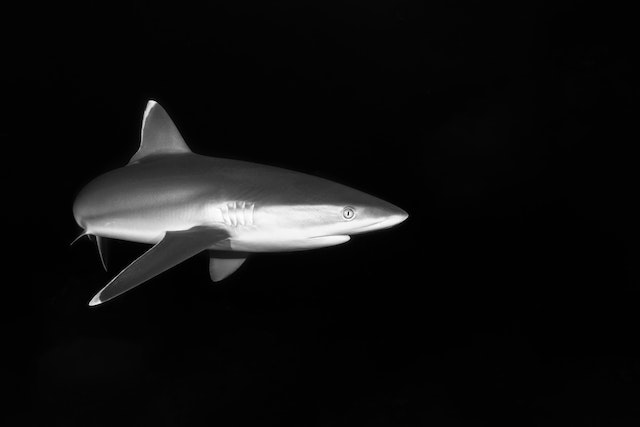
Meanwhile, males have a typical length of about 3.4 to 4 meters (11 to 13 feet) and a weight of around 522 to 771 kg (1,150 to 1,700 pounds).
However, some Great White Sharks have been reported to grow even larger, with certain individuals measuring up to 6 meters (20 feet) in length and weighing over 2,000 kg (4,400 pounds).
Habitat and Range
Great White Sharks are a widely distributed species that inhabit temperate coastal waters with temperatures ranging from 12 to 24 degrees Celsius (54 to 75 degrees Fahrenheit).
They can be found in a range of environments, such as rocky beaches, open oceans, and coral reefs.
Large-scale migrations by great white sharks are well-known; some of them travel thousands of miles annually.
Their range spans the Atlantic, Pacific, and Indian Oceans, but they face various threats from human activities, including habitat destruction and overfishing, which can affect their population and distribution.
Diet
Great White Sharks are at the top of the food chain and have a diverse diet that includes a variety of marine creatures.
They feed on fish, such as tuna and other sharks, as well as sea turtles, pinnipeds, and seabirds.
Great White Sharks are opportunistic hunters and will eat whatever prey is available in their surroundings. Their strong jaws and serrated teeth are effective at tearing through flesh.
Despite their fierce reputation, they may not always have successful hunts and can go for weeks without food, depending on prey availability in their habitat.
Life Expectancy
Great White Sharks can live up to 70 years for females and 30 years for males, although their exact lifespan is difficult to determine. They face threats from human activities and require conservation efforts to survive.
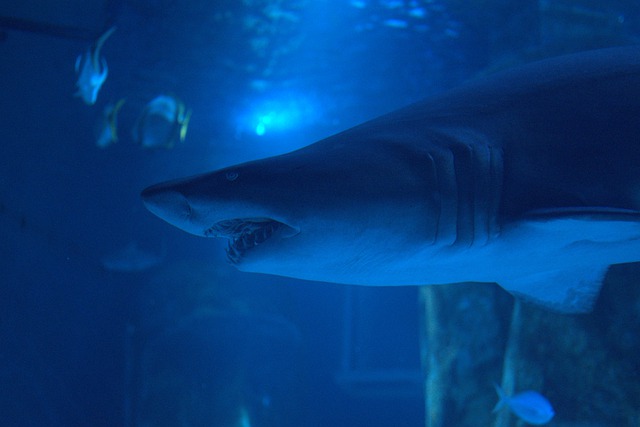
Fun facts about Great White Shark
1. Amazing Size:
One of the biggest predatory fish on Earth, great white sharks may reach lengths of 20 feet and weigh more than 5,000 pounds.
To put that in perspective, that’s roughly the size of a small car!
2. Warm-Blooded:
Unlike most fish, Great White Sharks are warm-blooded, which allows them to regulate their body temperature and swim in colder waters.
This adaptation gives them a metabolic advantage over other marine animals, allowing them to swim faster and hunt more efficiently.
3. Hunting Ability:
Great White Sharks are skilled hunters that can detect the heartbeat of their prey from miles away using their unique electroreception abilities.
They are also able to discern the movement patterns of their prey, allowing them to launch surprise attacks from below.
4. Prolific Eaters:
Great White Sharks can eat up to 90 pounds of food in a single meal and can go weeks without food after a large feast.
Typically, fish, seals, sea lions, and perhaps even whales make up their diet.
5. Speed Demons:
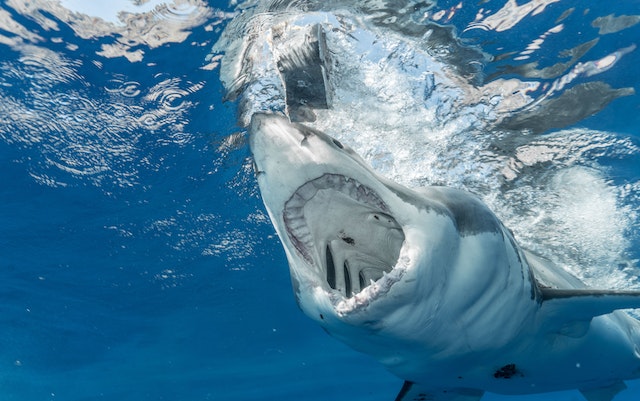
Great White Sharks can swim at speeds of up to 25 miles per hour, making them one of the fastest swimmers in the ocean.
They can maintain these speeds for brief periods, which enables them to capture their prey with ease.
6. Diving Depths:
Great White Sharks are capable of diving to depths of up to 4,000 feet, although they typically stay in shallower waters.
This allows them to hunt a wider range of prey and avoid competition with other predators.
7. Long-Distance Travelers:
Some Great White Sharks are reported to travel nearly 12,000 kilometers in a single year during their migration.
Scientists are still studying these migration patterns to better understand the behaviour and biology of these sharks.
8. Apex Predators:
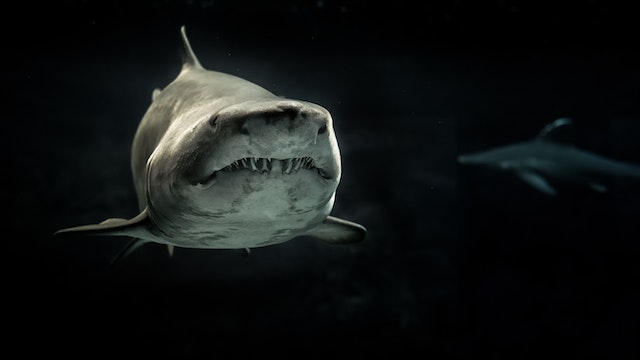
Except for people, great white sharks have no natural predators and are at the top of the food chain.
This gives them a unique role in the ecosystem and highlights their importance in maintaining balance in the ocean.
9. Dangerous Reputation:
Great White Sharks are often portrayed as vicious killers in popular culture, but they rarely attack humans and typically only do so by mistake.
In actuality, great white sharks pose a greater threat to us than we do to them.
10. Complex Social Lives:
Great White Sharks are social animals and have been observed exhibiting complex social behaviors, such as playing and sharing food.
Scientists are still studying the social dynamics of these sharks to better understand their behavior.
11. Endangered Species:
Great White Sharks are listed as a vulnerable species, with their population declining due to overfishing and habitat destruction.
Conservation efforts are necessary to ensure the survival of these iconic animals.
12. Powerful Bite:
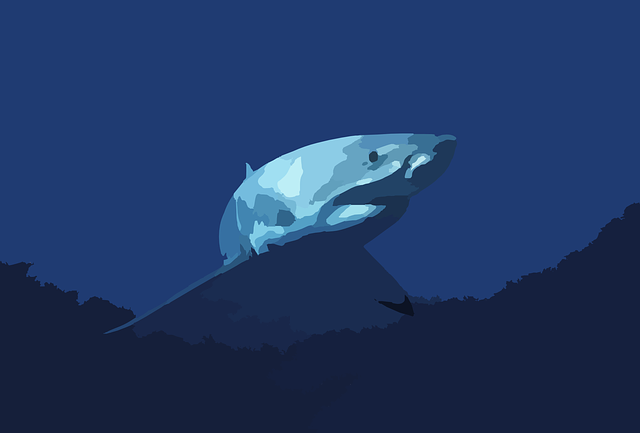
Great White Sharks have a bite force of up to 18,000 newtons, making their jaws one of the strongest of any animal on Earth.
This enables them to rip through strong tissue and quickly crush the bones of their victim.
13. Wide Range:
Great White Sharks can be found in many parts of the world, including off the coast of California, Australia, South Africa, and Japan.
Their range is largely determined by their prey and habitat preferences.
14. Excellent Senses:
Great White Sharks have keen senses, particularly an outstanding sense of smell that enables them to locate prey from great distances.
They also have keen eyesight and can detect vibrations in the water.
15. Mysterious Creatures:
Despite being one of the most studied shark species, there is still much we don’t know about Great White Sharks, including their behavior and mating habits.
Scientists continue to study these animals to unravel their mysteries and better understand their role in the ocean.
Conclusion
In conclusion, the Great White Shark is a fascinating and important species that plays a crucial role in marine ecosystems.
Despite their fearsome reputation, these sharks are not mindless killing machines but rather intelligent and adaptable predators that are essential for the health of our oceans.
However, like many shark species, Great White Sharks face numerous threats from human activities, including overfishing and habitat destruction.
To ensure the continued survival of these magnificent creatures, we must work to protect and conserve their habitats and educate ourselves about their behaviour and needs.
